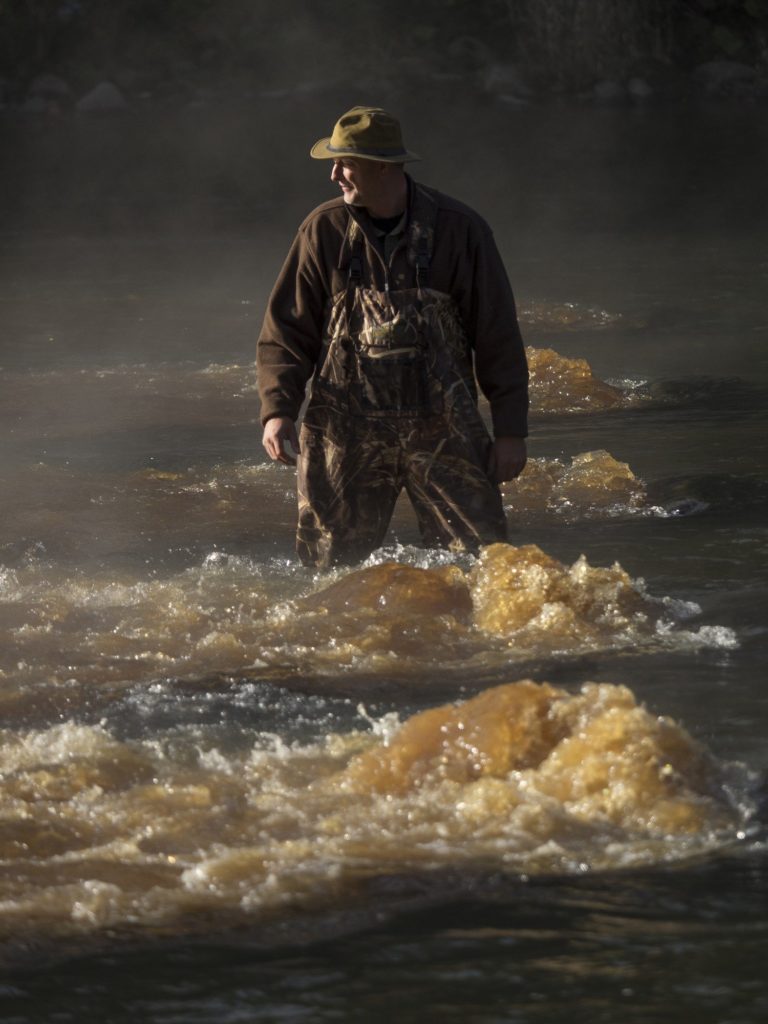Fighting for the “Nation’s River”
By: ajcarapella

By Emily Franc, Vice President, Development/Philanthropy, Potomac Riverkeeper Network
George Washington could have built his home anywhere on the Eastern seaboard. He chose the Potomac River, forever identifying it as the “Nation’s River.” Today, the Potomac watershed, home to more than six million people, is at constant risk of damage, pollution, and poisoning. The three Riverkeepers from the Potomac Riverkeeper Network face many challenges in protecting it.
“Keeping the Potomac – The Politics of Water,” winner of the 2017 Student Film Award of the American Conservation Film Festival, features these Riverkeepers’ efforts to address three big problems impacting the Potomac: agricultural-nutrient pollution along the Shenandoah River, a major tributary running through Virginia and West Virginia; a wastewater-treatment plant in Allegany County, Maryland, that pumps effluent into the upper Potomac; and coal-ash disposal ponds at Possum Point Power Plant in Dumfries, Virginia. The film was produced by graduate film students at American University’s School of Communication’s Center for Environmental Filmmaking.
Farmland manure and phosphorus runoff from fertilizer breed algae that kill great numbers of fish in the Shenandoah, and present Shenandoah Riverkeeper Mark Frondorf with a continuing battle. He works tirelessly to encourage farmers to fence their animals away from waterways, and has achieved much, but many farmers still do not engage in practices to protect the river from these dangers. He describes “Keeping the Potomac” as “a useful tool to help inform our neighbors about the importance of the work we do.”
“Being a Riverkeeper isn’t just a job. It’s a way of life.”
– Upper Potomac Riverkeeper Brent Walls
Upper Potomac Riverkeeper Brent Walls (above) is a leader in the fight against a wastewater treatment plant run by the Upper Potomac River Commission that discharges foul-smelling brown fluid 24 hours a day into an otherwise pristine section of the river. This noxious effluent, most of which flows from a paper mill, emits heavy amounts of nitrogen, at average temperatures of 100 degrees, directly into a section of the river commonly used for cold water fishing.
“Being a Riverkeeper is not just a job, it’s a way of life,” Walls says. “The North Branch Potomac was once considered dead from acid mine-drainage but is now bouncing back to support naturally producing trout, but the thermal and pollution impacts from the paper mill and the treatment plant are still keeping this river from achieving its full potential.”
The Potomac River from Washington, D.C. to Chesapeake Bay is served by Riverkeeper Dean Naujoks, who has struggled for years with the damage caused by Dominion Energy’s coal-ash disposal ponds, particularly at the Possum Point Power Plant. The film depicts Dean’s strenuous efforts to protect the river and the health of residents who are affected by this pollution.
“We wanted American University to convey the beauty of the river as much as highlight the hard-hitting issues impacting the river and communities fighting for clean water,” Naujoks says. “I think they captured both!”